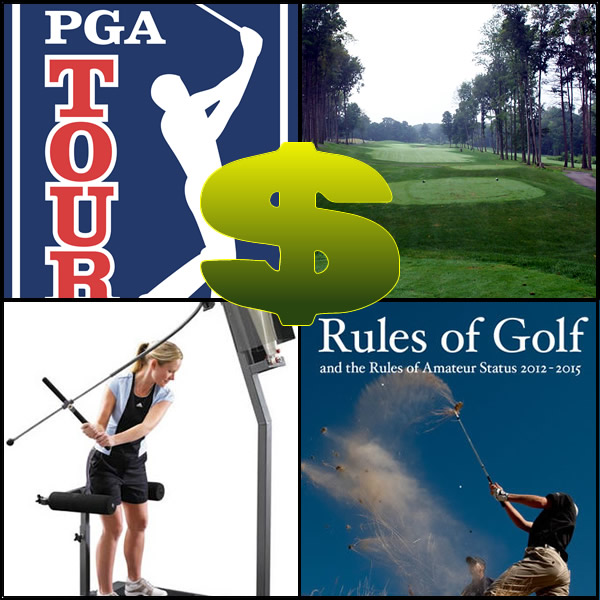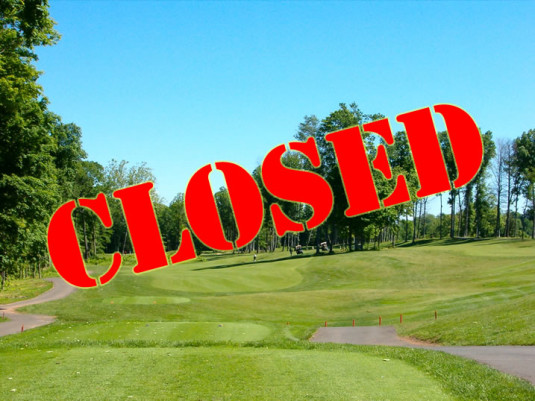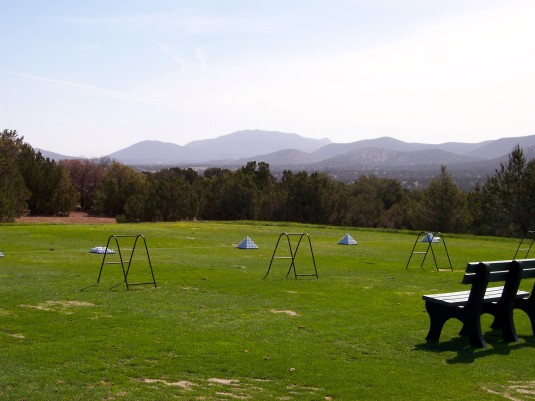It finally happened – the golf industry is finally starting to notice that the sport might be in trouble. It may have taken many, many course closures; mass retail layoffs; and hundreds of thousands of golfers to quit the game, but there is a buzz circulating within the industry…and that buzz can be basically boiled down to one question: How do we fix golf?
First, let me tell you what’s NOT going to fix golf: Gimmicks. Contrary to what you might have recently seen on HBO Real Sports, giant holes and nightclub driving ranges aren’t the answer (at least not in the long term). Instead, what needs to happen is a fundamental shift in the way we (industry folks including course owners; equipment and apparel companies; and sports media) approach this game…namely in how we teach it; write about it; and market it.
Fix # 1: Throw out the current USGA rulebook
The USGA rules are nice for tournament play, but the recreational golfer shouldn’t be held to them. For the high handicapper (90% of golfers), playing by the current rules not only makes the game more difficult, but it also (and perhaps more importantly) slows the game down. Now I’m not suggesting we have no rules. What we need is a simple set of basic guidelines that are universally accepted by the golfing industry (especially teaching pros). One such set already exists with the Recreational Golf Association of America’s rulebook. This rulebook consists of just 13 clear and concise rules along with a section on etiquette – that’s it. I’m also not opposed to the USGA creating its own simpler set of rules for the recreation golfer, as something with their official stamp on it might help with universal implementation and acceptance. And one more note on etiquette: I believe etiquette is more important than the rules themselves and it should be taught first – especially in regards to slow play (knowing which tee box you belong on; letting a faster group play though; etc.).
Fix # 2: Get equipment and apparel prices down
I fondly remember my first set of clubs – a complete set of Spalding Executives (it included all the irons, a sand wedge, the driver and 3- and 5-woods to boot)! Total price of my old clubs? $300. Handicap then: 18. Now I have a $700 set of irons; paid an additional $240 for a sand and gap wedge; and purchased last year’s driver for $200. Total price of my current clubs: $1,140. Handicap now: 18. WTF? I spent 280% more money for the same handicap? This is an all-too-real problem in golf. The reality is expensive clubs don’t help your game (try lots and lots of lessons and practice instead). Where are those Spalding Executives nowadays? They, or at least sets like them, need to be the main feature on display in retail outlets instead of the current à la carte system of club-buying. That system is only benefitting the manufactures and the public is starting to get wise. Same with apparel – why is the average big-name golf shirt $50 – $80? And why are prices in course pro shops so freaking high? People that might want to start playing golf see those prices and run for the hills.
Fix # 3: Change the focus to “fun”
Golf is played for fun and your score should always be secondary. As with the simplified rulebook, this needs to be universally accepted across the industry (actually, the mere acceptance of a new rulebook would go leaps and bounds for golfers having more fun). If the industry were to shift its marketing from “you have to play better” to “have fun playing,” not only would we retain more golfers, but create new ones to boot. We’d also remove some of the frustration tied to playing well and replace it with the idea that it’s more important just to be out playing. “Get outdoors on a beautiful course on a beautiful day while spending time with your friends or family.” This is the message we need to send. Not: “spend more money on this equipment so you can try to look halfway decent out there.” See the difference?
So: Simpler rules; lower prices; focus on fun.
I don’t want to sugar-coat this – these changes aren’t going to be easy. And the market is still going to shrink while it corrects itself from 20 years of overgrowth. But if the industry can adopt even just one of the three aforementioned fixes, the road to recovery will not only be faster, but the future of golf will be brighter.




Great article. Now how do we go about implementing your ideas. They sound great to me and EVERYONE can benefit from them. Let’s have fun on the course and enjoy friendship and the outdoors.